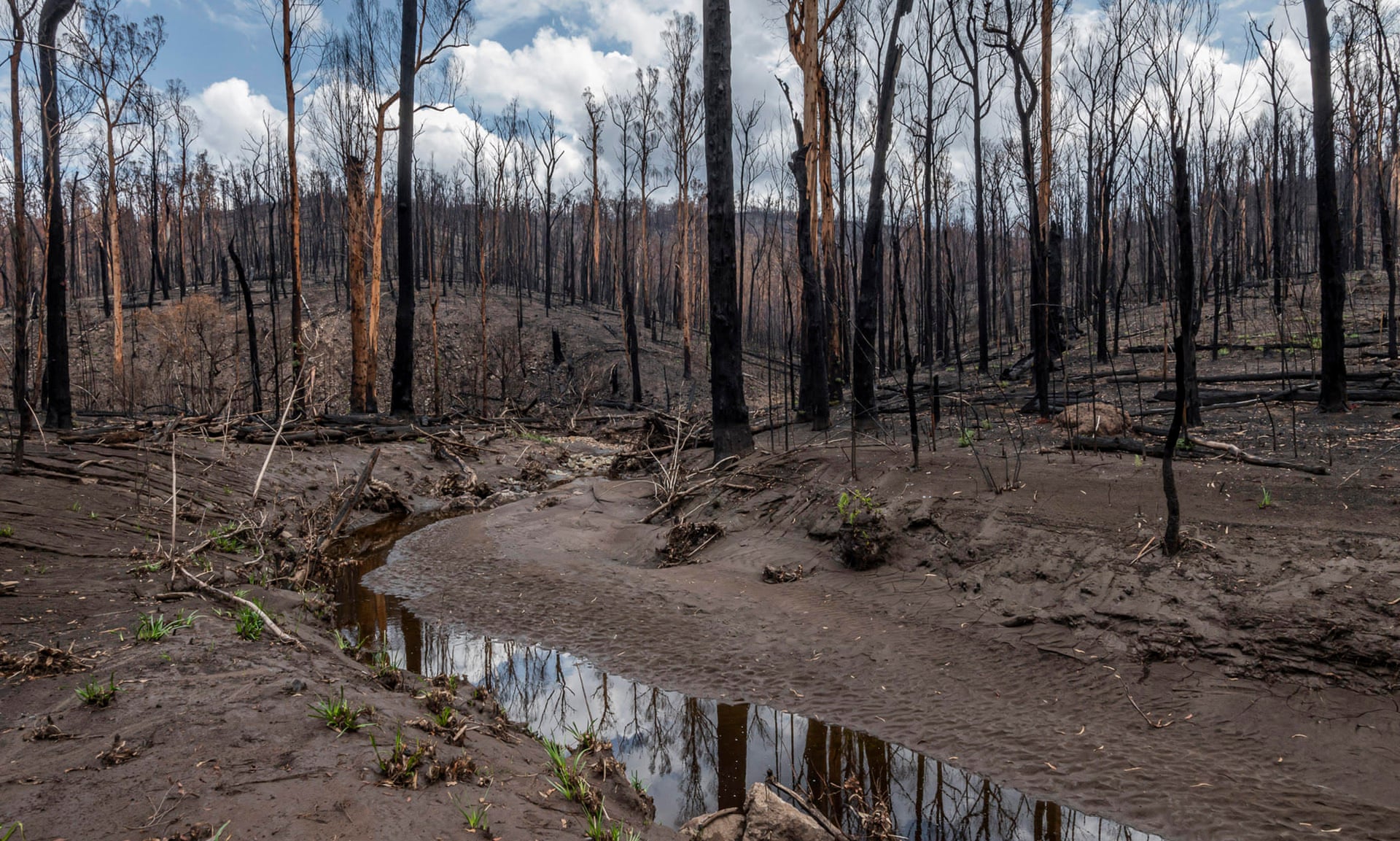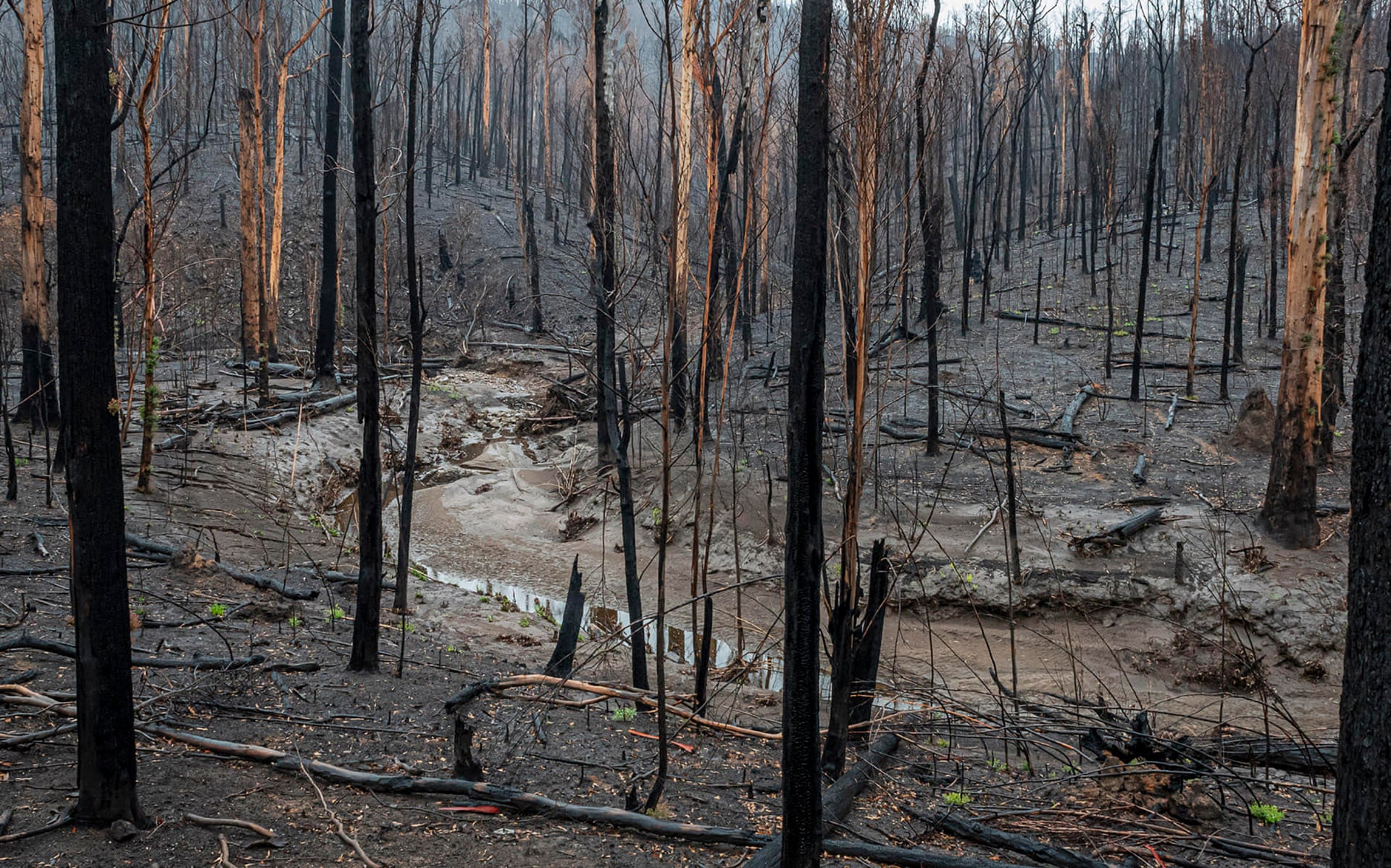
Australia’s rivers are being hit by a “triple whammy” of impacts that will have serious and long-term effects on species and could push some to extinction, according to experts.
Drought, bushfires in river catchments and now widespread heavy rain in the east of the country have created a cascade of impacts on fish, invertebrates and platypus.
Prof Ross Thompson, a freshwater ecologist at the University of Canberra’s Institute for Applied Ecology, said: “There’s a real risk of losing species that we have not even gotten around to describing yet.”
In New South Wales, thousands of fish have died in recent weeks in the Murray-Darling Basin and in coastal areas. Some of the mass fish kills were likely caused by the drought, while in other parts of the state ash flowing into rivers from bushfire areas has been blamed.
Low flows have caused a fish kill in the Brodribb River in Victoria’s East Gippsland, the ABC reported, with contractors pulling 1,200kg of dead fish from the water.
Sudden downpours running over parched river beds can stir up sediments that are carried downstream. Ash and mud washing into rivers from burned landscapes can increase bacteria growth in the water, which in turn starves the fish and other organisms of oxygen.
Thompson said: “The reality is that this combination of events have not been experienced by our fauna before, so the risk of things being extinct or being dramatically reduced is high.”
Thompson has studied the impacts of previous droughts and bushfires on freshwater systems. When the millennium drought broke, Thompson said, the downpours acted as “another disturbance” to species, rather than a welcome relief.
“Floods that come after droughts have really big impacts on aquatic biota,” he said. But with this summer’s addition of the extensive bushfires in river catchments, “we have a triple whammy this time”.
He said a study around the Murrumbidgee river after Canberra’s fires of 2003 had shown just how much sediment could be released into rivers from burnt catchments.
“There were pools in that river that were 5m deep that got completely filled in,” he said. Sediment tended to smother food sources that were on the river beds.
Thompson was particularly concerned about species such as the stocky galaxias – the subject of a rescue effort in the Kosciuszko national park – and the endangered Macquarie perch. He said a broader concern was that rivers might not get the 30 or 40 years they needed to recover before the next big disturbance.
Asked if climate change was playing a role, he said: “The combination of drought, increased intensity of fires and extreme rainfall events, particularly in summer, is entirely consistent with what we have been modelling and predicting.”
On the Macleay river, near Kempsey, hundreds of thousands of fish died after heavy rain upstream flushed ash and debris into the river, turning it into what one local described as “runny cake mix”.
One ecologist said it could take decades for the Macleay river to recover from the event.
Prof Fran Sheldon, of the Australian Rivers Institute, said adding so much ash and sediment into the rivers turned them into the aquatic equivalent of “deserts” because the bacteria sucked the oxygen from the water. “Most organisms can’t survive so they just disappear.”

Prof Max Finlayson, of the Institute for Land, Water and Society at Charles Sturt University, told Guardian Australia that while the individual impacts on rivers such as floods, droughts and bushfires were “not new phenomena”, it was the combination of impacts – together with the scale of the fires – that was “the big difference”.
“We have hammered these streams and lakes and they’re already under pressure from land clearing, development, pollution and [changes to] flows. The remnant populations [of species] are now subjected across a large area to a bigger threat. It’s extending the problems in a big and nasty way.
“Some of these fish are under a lot of pressure with remnant populations in isolated places. In any one area we would, in any one year, lose populations anyway, but if you lose them over a large area then it’s the actual species that’s at risk.”
Prof Lee Baumgartner, also at Charles Sturt University, said he had been in more than a dozen teleconference calls with fellow freshwater scientists and the No 1 issue was the impacts on rivers from bushfires.
“Everyone is very concerned about it,” he said. There had been rescue efforts of individual species, he said, that could provide an insurance policy for some species. Even if only one or two of the longer-lived fish survived, they were able to lay thousands of eggs at a time.
Sheldon, Baumgartner and Finlayson all told Guardian Australia that studying the state of the rivers and how they respond to the current crisis would be critical for informing conservation efforts in coming years.
Sheldon said: “Understanding the recovery is going to be very important for us as we manage these rivers into the future.”
Finlayson added: “Right now there’s not a lot we can do. But we will be in the same situation again next year. We need to assess which areas should be prioritised and why – that is about our biodiversity values and human-use values.
“We need actions, not just talk. We are at high risk of not just losing populations but whole species. Once we lose them, they are gone.”